One of the most intriguing sculptures ever created can be found decorating a stairwell in a famous mansion in London. This isn’t just because of its immense beauty, but because of the notorious man that it depicts.
Let’s take a closer look at some of the most interesting facts about Napoleon as Mars the Peacemaker, a remarkable Antonio Canova sculpture with some interesting stories to tell.
1. The statue was commissioned by Napoleon Bonaparte himself
By the early 19th century, Antonio Canova (1757-1822) had become one of the most sought-after artists in Europe. His career already spanned over 2 decades by then and his sculptures were commissioned by the most important people in Europe.
Napoleon Bonaparte seized power after the French Revolution in the late 18th century and he was crowned as the Emperor of France shortly after. This called for the ultimate glorification so he commissioned a statue from the most renowned Neoclassical artist at the time.
Napoleon insisted that Canova would visit him in Paris in 1802, and the artist did so to make a model. After all, who could deny such a request from the most powerful man in Europe at the time, right?
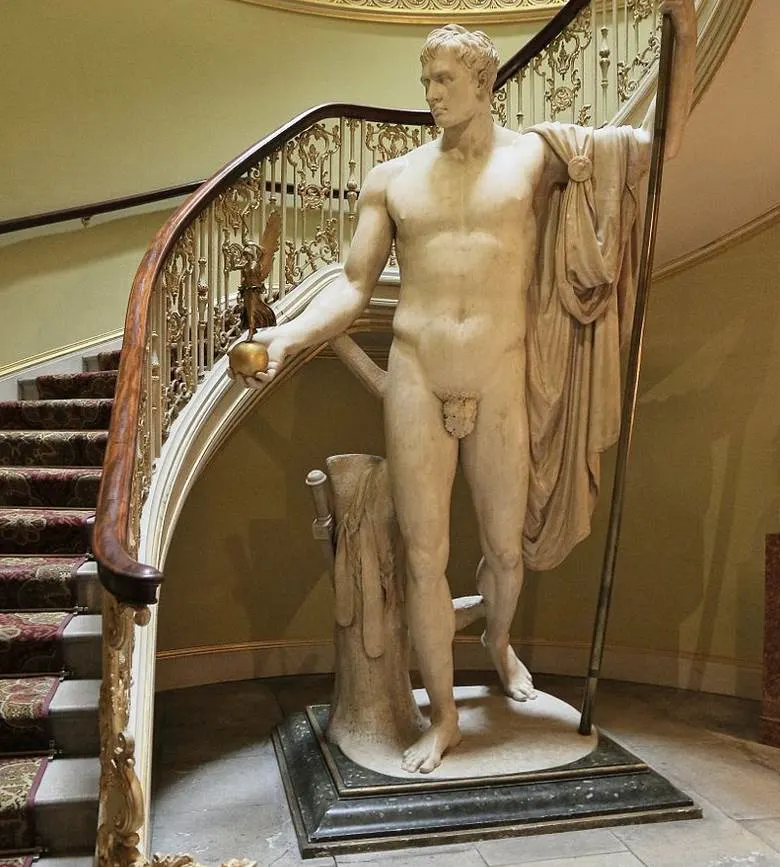
2. It depicts Napoleon in the style of a Roman Emperor
Whether or not Napoleon was a full-blown megalomaniac remains up for discussion as his character doesn’t fit such a singular description. That being said, he did want to glorify himself the same way as Roman Emperors did.
At the request of Napoleon, Canova sculpted the statue in such a way that it resembles the style of marble sculptures created for Augustus, the first Roman Emperor who seized power over 18 centuries before him.
Napoleon can be seen with an idealized body while holding a staff in his left hand. In his right hand, he’s holding a gilded Nike standing on an orb, the goddess of Victory in ancient Greece.
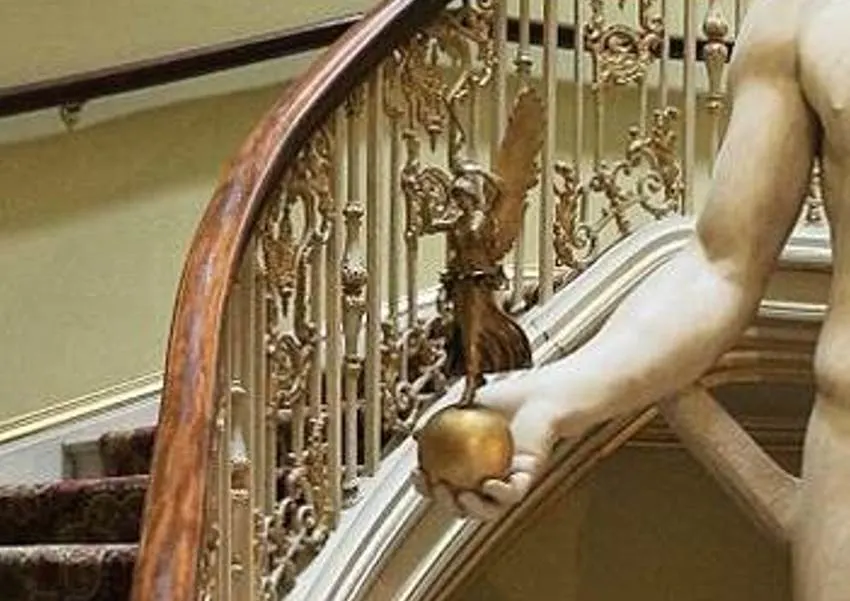
3. The statue was rejected when it arrived in France
Napoleon probably didn’t know exactly how the statue would look like upon completion. After all, when Canova visited the French leader in 1802, he only modeled a bust of the man.

The artist only started working on the statue when he returned to Italy in 1803 and only completed the immense white marble sculpture in 1806.
Although the state was already completed in 1806, it wasn’t until late-1810 that it was transported to Paris, arriving in the French capital on New Years Day 1811. Napoleon, busy as always conquering new territories, only saw the statue in April 1811.
He instantly rejected the work, merely calling it “too athletic.”

Napoleon didn’t just reject the work, he also instantly banned the general public from seeing it. The Louvre Museum had already been turned into the “Musée Napoleon” back then and the Napoleon as Mars the Peacemaker was supposed to have decorated it.
This never happened, but because it wasn’t as easy to move the immense sculpture to another location, they ended up putting it behind a screen at the “Salle des Hommes Illustres,” only visible to guests.
Arthur Wellesley, 1st Duke of Wellington (1769-1852), a general in the British Army during the Napoleonic Wars who was granted Dukedom because of his victories, first saw the statue here in 1814.
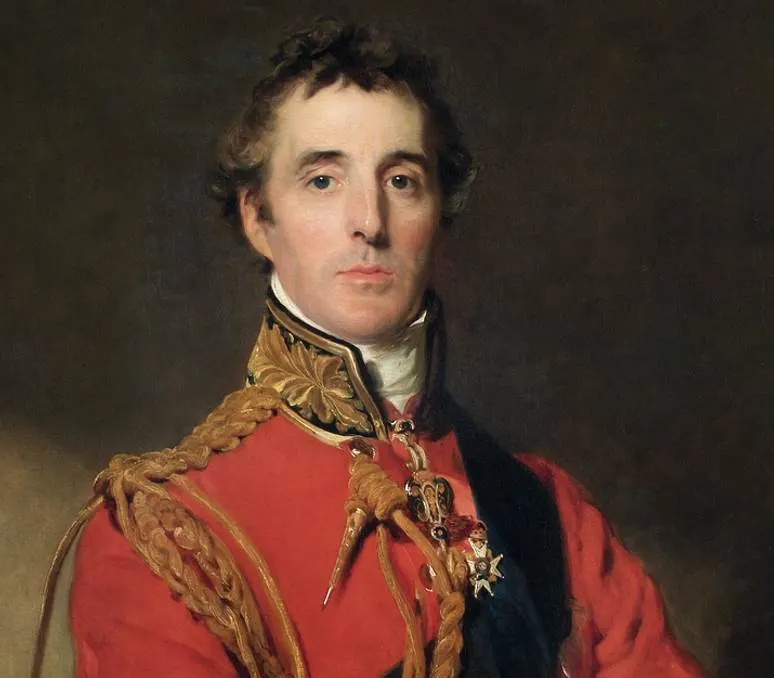
5. The statue has decorated a London mansion for over 2 centuries
So why is it important that the Duke of Wellington saw Napoleon as Mars the Peacemaker at the Louvre in 1814?
Following the defeat and exile of Napoleon, the looted art that decorated the Musée Napoleon was returned to its original location. Since this particular statue was commissioned by Napoleon himself, it was put for sale.
Canova supported the campaign of returning the looted art to its rightful owners and was still one of the most popular artists in Europe at the time. He was especially popular with British patrons.
The statue was eventually bought by the British Government from Louis XVIII for 66,000 francs, the equivalent of nearly £3,000 in 1816 or nearly £300,000 today.
It was granted to the Duke of Wellington who placed it in the stairwell of the Apsley House in 1817, his residence in London that was transformed into a museum and which is open to the general public today.
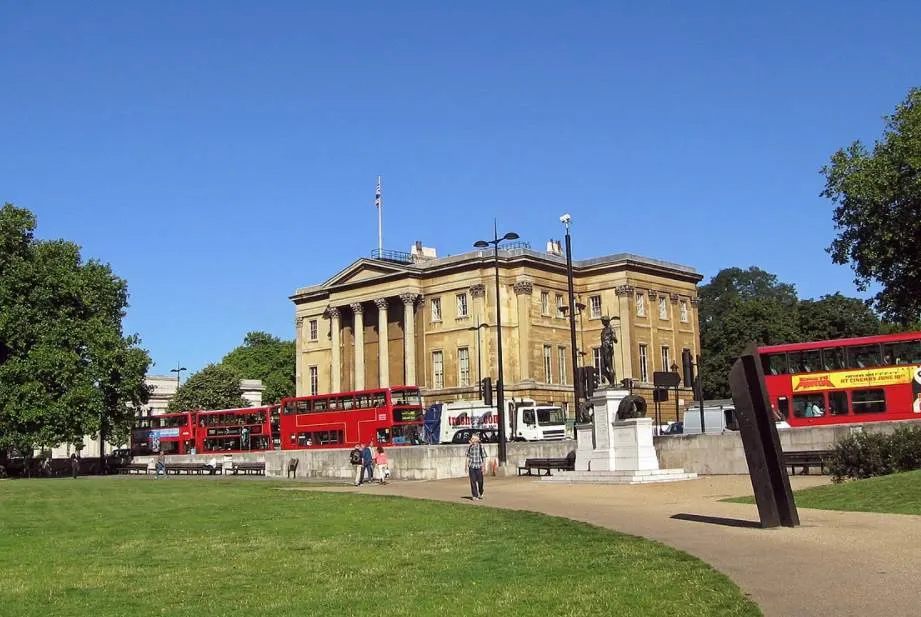
More interesting facts about Napoleon as Mars the Peacemaker by Canova
6. Just like the classical sculptures depicting Roman Emperors, the statue is well over life-sized. It stands 345 centimeters (136 inches) when measured to the tip of the left hand.
7. The Apsley House is a Neoclassical structure that was originally built as a red brick building between 1771 and 1778 for Lord Apsley. This is how the structure got its name, although it’s sometimes referred to as the “Wellington Museum” as well.
The house is located on the southeast corner of Hyde Park, not too far from Wellington Arch in London. It was designated as a museum in 1947 which is managed by English Heritage. The Neoclassical structure has an extensive collection of fine art on display.
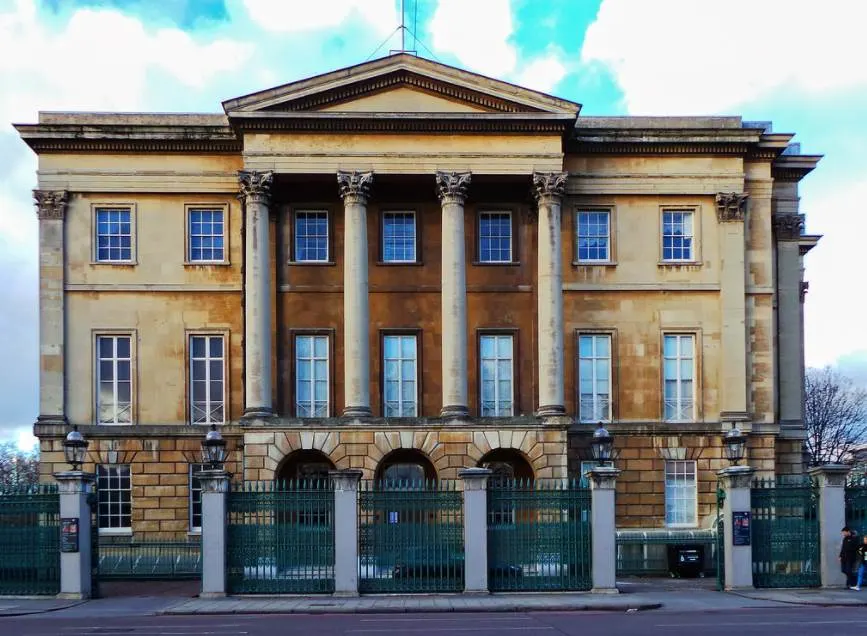
8. Surviving documents of the period in which Napoleon as Mars the Peacemaker was still a work in progress talked in favor of the work. The French ambassador in Rome, a man named François Cacault, even wrote “it must become the most perfect work of this century.”
The director of the Musée Napoleon named Vivant Denon already knew where he wanted to place it, writing that “it should be placed among the emperors and in the niche where the Laocoon is, in such a manner that it would be the first object that one sees on entering.”
9. The fact that Napoleon rejected the statue didn’t deter Antonio Canova from creating plaster casts of it, something he did with most of his works so they could be reproduced.
He created a total of 5 plaster casts of which one remains in pretty good condition. This cast is now part of the collection of the Accademia di Belle Arti of Italy.
10. The plaster casts weren’t the only reproduction of Napoleon as Mars the Peacemaker. A bronze copy of the statue was cast in 1811 by a Roman sculptor named Francesco Righetti and his son Luigi.
What’s remarkable about this copy is that the bronze was taken from canons located at the Castel Sant’Angelo in Rome, an ancient structure that was originally built as the Mausoleum of Roman Emperor Hadrian.
Today, this bronze statue decorates the courtyard of Palazzo Brera, the location of the most famous museums in Milan, the Accademia di Belle Arti di Brera and the Pinacoteca di Brera.

